#JavaScript Frameworks 2024
Explore tagged Tumblr posts
Text
Latest Trends In Web Development For 2024

With 2024 in the picture, a lot of shifts and advancements are expected as far as web development is concerned. Considering the rapid evolution of the trends, developers must keep themselves updated with the latest trends and technologies in order to stay competitive. In this post, we have compiled a list of Web Development Trends for 2024.
Are you excited to embrace the Latest Web Development Technologies that are going to dominate the trend? Read More
#intelliatech#itsbenefits#it services#software engineering#itandsoftware#API-first Design#UI Dark Mode UI#Front-end Development#Trends Front-end Development#Headless CMS#JavaScript Frameworks 2024#Latest Web Development Technologies#Low-Code/No-Code Development#Progressive Web Apps (PWA)#Responsive Design#Static Site Generators#UX Design Trends 2024#Voice Search Optimization#web development trends#web development trends and technology
0 notes
Link
0 notes
Text
Mini React.js Tips #1 | Resources ✨
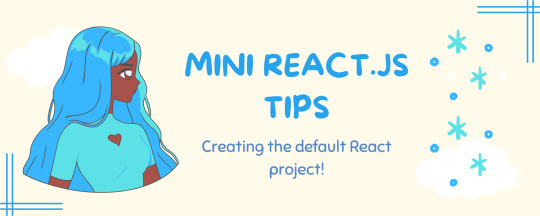
I thought why not share my React.js (JavaScript library) notes I made when I was studying! I will start from the very beginning with the basics and random notes I made along the way~!
Up first is what you'll need to know to start any basic simple React (+ Vite) project~! 💻
What you'll need:
node.js installed >> click
coding editor - I love Visual Studio Code >> click
basic knowledge of how to use the Terminal

What does the default React project look like?

Step-by-Step Guide
[ 1 ] Create a New Folder: The new folder on your computer e.g. in Desktop, Documents, wherever that will serve as the home for your entire React project.
[ 2 ] Open in your coding editor (will be using VSCode here): Launch Visual Studio Code and navigate to the newly created folder. I normally 'right-click > show more options > Open with Code' on the folder in the File Explorer (Windows).
[ 3 ] Access the Terminal: Open the integrated terminal in your coding editor. On VSCode, it's at the very top, and click 'New Terminal' and it should pop up at the bottom of the editor.


[ 4 ] Create the actual React project: Type the following command to initialize a new React project using Vite, a powerful build tool:
npm create vite@latest
[ 5 ] Name Your Project: Provide a name for your project when prompted.

[ 6 ] Select 'React' as the Framework: Navigate through the options using the arrow keys on your keyboard and choose 'React'.

[ 7 ] Choose JavaScript Variant: Opt for the 'JavaScript' variant when prompted. This is the programming language you'll be using for your React application.

[ 8 ] Navigate to Project Folder: Move into the newly created project folder using the following command:
cd [your project name]
[ 9 ] Install Dependencies: Execute the command below to install the necessary dependencies for your React project (it might take a while):
npm install

[ 10 ] Run the Development Server: Start your development server with the command (the 'Local' link):
npm run dev

[ 11 ] Preview Your Project: Open the link provided in your terminal in your web browser. You're now ready to witness your React project in action!


Congratulations! You've successfully created your first React default project! You can look around the project structure like the folders and files already created for you!
BroCode's 'React Full Course for Free' 2024 >> click
React Official Website >> click
Stay tuned for the other posts I will make on this series #mini react tips~!
#mini react tips#my resources#resources#codeblr#coding#progblr#programming#studyblr#studying#javascript#react.js#reactjs#coding tips#coding resources
115 notes
·
View notes
Text


saturday, august 31st, 2024
this morning I finished reading High Performance Python. I think it was a good book and I learned more about how Python works in general, even if a lot of the optimizations explained in the book aren't super applicable to anything that I'm working on at the moment. if you do any sort of scientific computing, I think this book will be pretty helpful.
I also read Alex Russel's Reckoning series today and wrote a few notes in my commonplace book. I'd say this series of blog posts is pretty much required reading if you do any sort of front-end web dev work. (tl;dr heavy JavaScript-based SPA frameworks are used far more often than they should be, and they're destroying the usability of the web for folks at the margins. bad design & engineering decisions have real-world impacts, like preventing people from accessing public services and benefits websites.) I highly recommend giving this series a read.
I plan to spend this long weekend reading, relaxing, and going on walks now that the weather is a bit cooler. what are y'all looking forward to this weekend? <3
25 notes
·
View notes
Text
youtube
People Think It’s Fake" | DeepSeek vs ChatGPT: The Ultimate 2024 Comparison (SEO-Optimized Guide)
The AI wars are heating up, and two giants—DeepSeek and ChatGPT—are battling for dominance. But why do so many users call DeepSeek "fake" while praising ChatGPT? Is it a myth, or is there truth to the claims? In this deep dive, we’ll uncover the facts, debunk myths, and reveal which AI truly reigns supreme. Plus, learn pro SEO tips to help this article outrank competitors on Google!
Chapters
00:00 Introduction - DeepSeek: China’s New AI Innovation
00:15 What is DeepSeek?
00:30 DeepSeek’s Impressive Statistics
00:50 Comparison: DeepSeek vs GPT-4
01:10 Technology Behind DeepSeek
01:30 Impact on AI, Finance, and Trading
01:50 DeepSeek’s Effect on Bitcoin & Trading
02:10 Future of AI with DeepSeek
02:25 Conclusion - The Future is Here!
Why Do People Call DeepSeek "Fake"? (The Truth Revealed)
The Language Barrier Myth
DeepSeek is trained primarily on Chinese-language data, leading to awkward English responses.
Example: A user asked, "Write a poem about New York," and DeepSeek referenced skyscrapers as "giant bamboo shoots."
SEO Keyword: "DeepSeek English accuracy."
Cultural Misunderstandings
DeepSeek’s humor, idioms, and examples cater to Chinese audiences. Global users find this confusing.
ChatGPT, trained on Western data, feels more "relatable" to English speakers.
Lack of Transparency
Unlike OpenAI’s detailed GPT-4 technical report, DeepSeek’s training data and ethics are shrouded in secrecy.
LSI Keyword: "DeepSeek data sources."
Viral "Fail" Videos
TikTok clips show DeepSeek claiming "The Earth is flat" or "Elon Musk invented Bitcoin." Most are outdated or edited—ChatGPT made similar errors in 2022!
DeepSeek vs ChatGPT: The Ultimate 2024 Comparison
1. Language & Creativity
ChatGPT: Wins for English content (blogs, scripts, code).
Strengths: Natural flow, humor, and cultural nuance.
Weakness: Overly cautious (e.g., refuses to write "controversial" topics).
DeepSeek: Best for Chinese markets (e.g., Baidu SEO, WeChat posts).
Strengths: Slang, idioms, and local trends.
Weakness: Struggles with Western metaphors.
SEO Tip: Use keywords like "Best AI for Chinese content" or "DeepSeek Baidu SEO."
2. Technical Abilities
Coding:
ChatGPT: Solves Python/JavaScript errors, writes clean code.
DeepSeek: Better at Alibaba Cloud APIs and Chinese frameworks.
Data Analysis:
Both handle spreadsheets, but DeepSeek integrates with Tencent Docs.
3. Pricing & Accessibility
FeatureDeepSeekChatGPTFree TierUnlimited basic queriesGPT-3.5 onlyPro Plan$10/month (advanced Chinese tools)$20/month (GPT-4 + plugins)APIsCheaper for bulk Chinese tasksGlobal enterprise support
SEO Keyword: "DeepSeek pricing 2024."
Debunking the "Fake AI" Myth: 3 Case Studies
Case Study 1: A Shanghai e-commerce firm used DeepSeek to automate customer service on Taobao, cutting response time by 50%.
Case Study 2: A U.S. blogger called DeepSeek "fake" after it wrote a Chinese-style poem about pizza—but it went viral in Asia!
Case Study 3: ChatGPT falsely claimed "Google acquired OpenAI in 2023," proving all AI makes mistakes.
How to Choose: DeepSeek or ChatGPT?
Pick ChatGPT if:
You need English content, coding help, or global trends.
You value brand recognition and transparency.
Pick DeepSeek if:
You target Chinese audiences or need cost-effective APIs.
You work with platforms like WeChat, Douyin, or Alibaba.
LSI Keyword: "DeepSeek for Chinese marketing."
SEO-Optimized FAQs (Voice Search Ready!)
"Is DeepSeek a scam?" No! It’s a legitimate AI optimized for Chinese-language tasks.
"Can DeepSeek replace ChatGPT?" For Chinese users, yes. For global content, stick with ChatGPT.
"Why does DeepSeek give weird answers?" Cultural gaps and training focus. Use it for specific niches, not general queries.
"Is DeepSeek safe to use?" Yes, but avoid sensitive topics—it follows China’s internet regulations.
Pro Tips to Boost Your Google Ranking
Sprinkle Keywords Naturally: Use "DeepSeek vs ChatGPT" 4–6 times.
Internal Linking: Link to related posts (e.g., "How to Use ChatGPT for SEO").
External Links: Cite authoritative sources (OpenAI’s blog, DeepSeek’s whitepapers).
Mobile Optimization: 60% of users read via phone—use short paragraphs.
Engagement Hooks: Ask readers to comment (e.g., "Which AI do you trust?").
Final Verdict: Why DeepSeek Isn’t Fake (But ChatGPT Isn’t Perfect)
The "fake" label stems from cultural bias and misinformation. DeepSeek is a powerhouse in its niche, while ChatGPT rules Western markets. For SEO success:
Target long-tail keywords like "Is DeepSeek good for Chinese SEO?"
Use schema markup for FAQs and comparisons.
Update content quarterly to stay ahead of AI updates.
🚀 Ready to Dominate Google? Share this article, leave a comment, and watch it climb to #1!
Follow for more AI vs AI battles—because in 2024, knowledge is power! 🔍
#ChatGPT alternatives#ChatGPT features#ChatGPT vs DeepSeek#DeepSeek AI review#DeepSeek vs OpenAI#Generative AI tools#chatbot performance#deepseek ai#future of nlp#deepseek vs chatgpt#deepseek#chatgpt#deepseek r1 vs chatgpt#chatgpt deepseek#deepseek r1#deepseek v3#deepseek china#deepseek r1 ai#deepseek ai model#china deepseek ai#deepseek vs o1#deepseek stock#deepseek r1 live#deepseek vs chatgpt hindi#what is deepseek#deepseek v2#deepseek kya hai#Youtube
2 notes
·
View notes
Text
🌐 Top 10 Tools Every Web Developer Should Know in 2024 🚀
Hey, guys👋 If you're diving into the world of web development or looking to level up your skills, here are the top 10 tools you need to check out this year:
Visual Studio Code - The ultimate code editor with tons of extensions to boost your productivity. 💻✨
GitHub - Manage your code and collaborate with others seamlessly. 🛠️🤝
Bootstrap - Design responsive websites quickly with this popular CSS framework. 📱🎨
Figma - Collaborate on UI/UX designs in real-time with this powerful design tool. 🖌️👥
Node.js - Build scalable server-side applications using JavaScript. 🌐🔧
Webpack - Optimize your JavaScript files and manage dependencies efficiently. ⚙️📦
React.js - Create interactive UIs with this widely-used JavaScript library. ⚛️🔍
Sass - Write more maintainable CSS with features like variables and mixins. 🧩📝
Postman - Test APIs and ensure everything runs smoothly. 🔍💡
Jira - Track tasks and manage agile workflows for smooth project management. 📊📅
These tools can supercharge your development process and help you build amazing web applications. For those looking to take their projects to the next level, partnering with a web application development agency could be the key to unlocking even more potential. 🚀💼
#WebDevelopment#Coding#DeveloperTools#VisualStudioCode#GitHub#Bootstrap#Figma#NodeJS#Webpack#ReactJS#Sass#Postman#Jira#TechTips#WebApplicationDevelopment
3 notes
·
View notes
Text
New Tasks and New Tasks
Daily Blogs 353 - Oct 23rd, 12.024
New tasks from the job, and new tasks from my own projects. Which both of them I couldn't complete today. JavaScript cache-busting with import maps generation is not as easy as I thought, hopefully I can try again in the future, but I don't want to spend a lot of time on one feature.
It is being interesting to create my own framework for my own projects.
Today's artists & creative things Music: Bells - by The Unlikely Candidates
© 2024 Gustavo "Guz" L. de Mello. Licensed under CC BY-SA 4.0
2 notes
·
View notes
Text
Top 10 Front-End Frameworks and Libraries for 2024
As the web development landscape continues to evolve, staying updated with the latest front-end frameworks and libraries is crucial for any developer. Whether you're a seasoned pro or just starting out, knowing which tools to use can significantly impact your productivity and the quality of your projects. In this post, we’ll explore the top 10 front-end frameworks and libraries that are set to dominate in 2024.
1. React
React remains one of the most popular front-end libraries, known for its simplicity and flexibility.
Key Features of React
Component-Based Architecture: Reusable components make development efficient and manageable.
Virtual DOM: Enhances performance by minimizing direct DOM manipulation.
Strong Community Support: A vast ecosystem of tools, libraries, and tutorials.
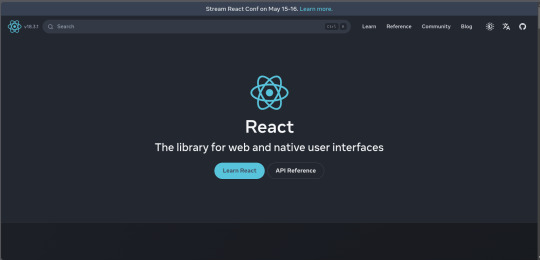
2. Angular
Angular, backed by Google, is a powerful framework for building dynamic single-page applications (SPAs).
Why Choose Angular?
Two-Way Data Binding: Synchronizes data between the model and the view.
Dependency Injection: Improves code maintainability and testability.
Comprehensive Documentation: Extensive resources for learning and troubleshooting.
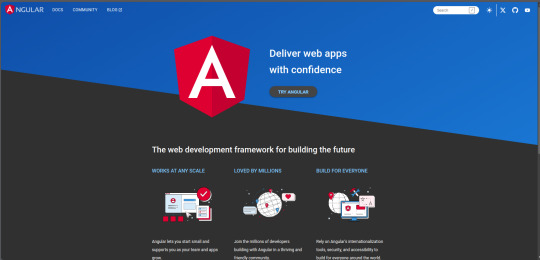
3. Vue.js
Vue.js has gained popularity due to its gentle learning curve and versatility.
Advantages of Vue.js
Reactive Data Binding: Simplifies state management.
Single-File Components: Encapsulate HTML, CSS, and JavaScript in one file.
Flexibility: Can be used for both large-scale and small-scale applications.
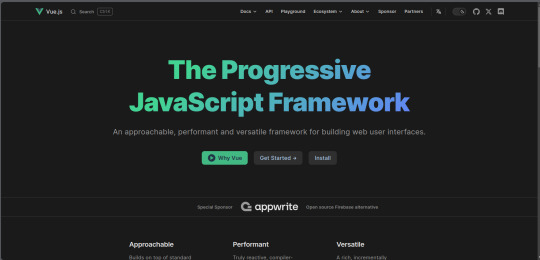
4. Svelte
Svelte is a relatively new player that compiles components into highly efficient vanilla JavaScript at build time.
Svelte’s Standout Features
No Virtual DOM: Directly manipulates the DOM for better performance.
Less Boilerplate: Cleaner code with minimal overhead.
Ease of Use: Intuitive and straightforward syntax.
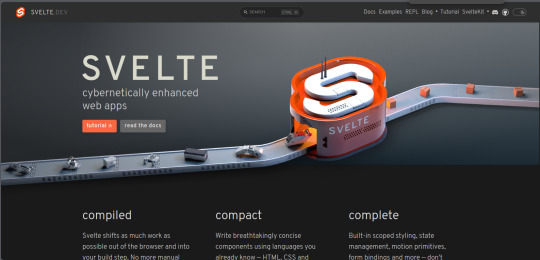
5. Bootstrap
Bootstrap is a front-end framework that provides pre-designed components and a responsive grid system.
Benefits of Using Bootstrap
Responsive Design: Ensures your site looks great on all devices.
Pre-Styled Components: Saves time with ready-to-use UI elements.
Customizable: Easily customize with Sass variables and Bootstrap’s extensive options.
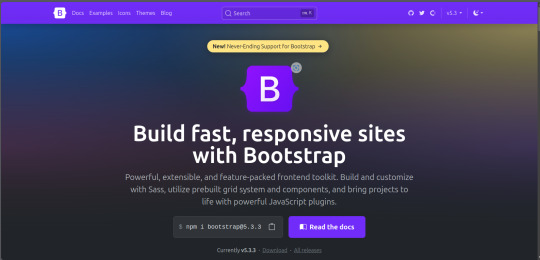
6. Tailwind CSS
Tailwind CSS is a utility-first CSS framework that allows for rapid UI development.
Tailwind CSS Features
Utility-First Approach: Use utility classes directly in your HTML.
Customizable: Extensive configuration options to suit your project’s needs.
Consistency: Enforces a consistent design language across your project.
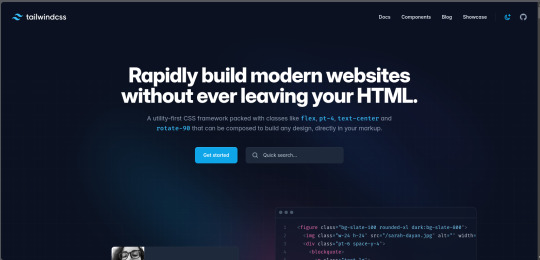
7. Ember.js
Ember.js is a robust framework for building ambitious web applications.
Why Ember.js Stands Out
Convention over Configuration: Reduces the amount of decision-making and boilerplate code.
Strong Routing: Powerful routing capabilities for managing application state.
Productivity: Focuses on developer productivity with built-in best practices.
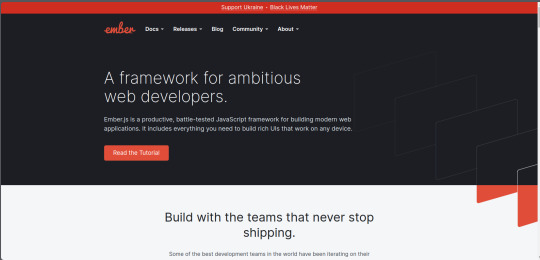
8. Alpine.js
Alpine.js offers a minimal and lightweight way to add interactivity to your websites.
Key Features of Alpine.js
Lightweight: Small footprint with only a few kilobytes.
Declarative Syntax: Similar to Vue.js, making it easy to understand and implement.
Ease of Integration: Can be easily integrated into existing projects.
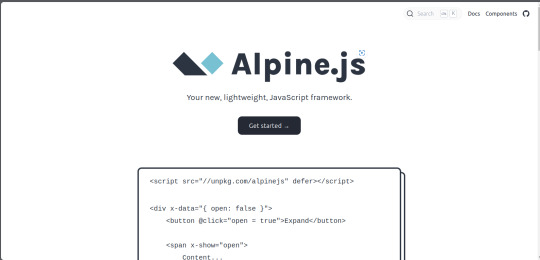
9. Next.js
Next.js is a popular React framework that enables server-side rendering and static site generation.
Benefits of Using Next.js
Server-Side Rendering (SSR): Improves performance and SEO by rendering pages on the server.
Static Site Generation (SSG): Pre-renders pages at build time for fast load times.
API Routes: Allows you to create API endpoints within your application.
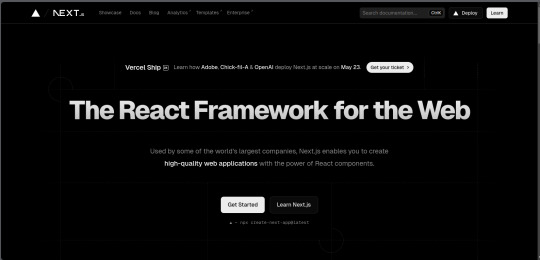
10. Lit
Lit is a simple library for building fast, lightweight web components.
Advantages of Lit
Web Components: Embraces the web components standard for reusable, encapsulated HTML elements.
Performance: Lightweight and highly performant.
Simple API: Easy to learn and use with a minimal API surface.
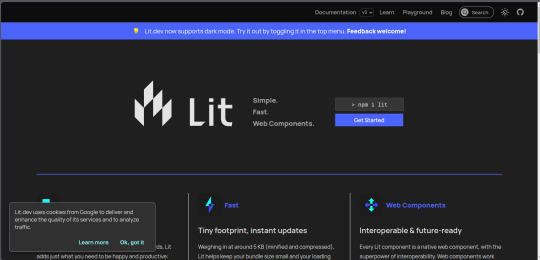
Conclusion
Choosing the right front-end framework or library can significantly impact your workflow and the quality of your projects. Whether you prefer the flexibility of React, the structure of Angular, or the simplicity of Svelte, there's a tool out there to suit your needs.
Final Tips for Selecting a Framework or Library
Project Requirements: Consider the specific needs of your project.
Community and Support: Look for frameworks with strong community support and documentation.
Learning Curve: Choose a tool that matches your current skill level and the time you have available to learn.
By staying informed about the latest tools and trends, you can ensure that your skills remain relevant and that you can deliver the best possible results in your projects. Happy coding!
Remember, the best tool is the one that helps you get the job done efficiently and effectively. So, dive into these frameworks and libraries, and take your front-end development skills to the next level!
Share Your Thoughts
I'm curious to know your thoughts on these front-end frameworks and libraries. Have you used any of them in your projects? Which one is your favorite, and why? Share your experiences and insights in the comments below.👇
2 notes
·
View notes
Text
Top Internship Opportunities Students Might Be Missing Out On
In the bustling city of Ahmedabad, amidst the scorching summer heat, lies a golden opportunity for IT aspirants to elevate their skills and gain hands-on experience in the ever-evolving realm of technology. The Special Character (TSC), with its innovative approach to internships, unveils a unique Summer Internship Program for 2024, promising a transformative experience for participants.
At the core of this program lies the essence of real-world application development. Unlike conventional internships that often involve mundane tasks, TSC's internship immerses participants in real-world projects, providing them with a unique opportunity to explore the complexities of IoT, email marketing, e-commerce platforms, and advanced web development.
What makes this program unique is its focus on hands-on learning and practical experience. Over just one month, participants are immersed in a dynamic environment where they not only learn theoretical concepts but also apply them to real-world scenarios. This hands-on approach fosters a deeper understanding of the subject matter, equipping participants with practical skills that are highly sought after in the industry.

Why Choose a Live Project Internship?
Many traditional internships relegate students to administrative tasks or basic research. While these can be valuable, a live project internship like TSC's offers a new level of engagement. Here's why it stands out:
Real-World Application: Forget theoretical exercises. You'll be working on actual projects, gaining exposure to the challenges and workflows of the industry. This practical experience makes your skills more relevant and showcases your ability to contribute on day one.
Skill Development on Demand: Summer Internship 2024 focuses on in-demand technologies like HTML5, CSS3, JavaScript, and frameworks like React Native and Node.js. You'll not only learn the basics but also gain expertise, making you a more attractive candidate for future tech jobs.
Building a Portfolio: Live projects become part of your portfolio, providing concrete evidence of your skills and accomplishments. This tangible showcase is invaluable when applying for full-time positions after graduation.
Beyond Technical Skills: A Holistic Learning Experience
The Summer Internship in Ahmedabad goes beyond just coding. TSC understands the importance of well-rounded professionals. Here's what sets them apart:
Expert Mentorship: You'll be guided by an experienced mentor with extensive industry knowledge. This one-on-one support ensures you grasp concepts effectively and navigate project challenges with confidence.
Multilingual Learning Environment: Whether you're comfortable in English, Gujarati, or Hindi, TSC offers a supportive environment that caters to your learning style. This fosters inclusivity and allows you to focus on the content, not the language barrier.
Communication and Soft Skills Training: Technical skills are crucial, but communication and teamwork are equally important in the professional world. TSC provides complementary training in these areas, ensuring you can collaborate and present your ideas effectively.
The Competitive Advantage: Showcase Your Talent and Win!
Summer Internship 2024 adds a fun twist with a team competition element. Working collaboratively on live projects, you'll get to showcase your talent, problem-solving skills, and team spirit. The top three teams win exciting cash prizes, providing financial rewards and recognition for your hard work.
Bonus Perks and Career Opportunities
The benefits of this internship program extend beyond the core curriculum. Here are some additional perks:
Convenient Location: Located in the heart of Ahmedabad, the program offers easy access, minimizing commute time and maximizing your learning hours.
Free Training Sessions: TSC provides complimentary sessions on communication and aptitude, enhancing your overall professional skillset.
Fun and Supportive Environment: Enjoy a positive work environment with a supportive team and complimentary goodies to keep you energized throughout the program.
Potential Career Launchpad: Impress your mentors with your dedication and skills, and you might land a permanent position at TSC, kickstarting your career in no time!
Limited Spots Available: Secure Your Seat Today!
With a focus on live projects, expert guidance, and a chance to win big, the Summer Internship in Ahmedabad offered by The Special Character is a unique opportunity for IT aspirants. Don't miss out on this chance to gain valuable skills, build a strong portfolio, and potentially secure your future in the ever-evolving tech industry.
Remember, spots are limited! Visit their website to register and secure your seat for a summer of learning, growth, and exciting possibilities.
Note: This blog post is informative and does not contain any promotional language for The Special Character.
#The Special Character#TSC#Web development#Software development#app development#mobile apps#software development#Web dev#devops#Internship#summer internships
2 notes
·
View notes
Text
7 Programming Languages for Web Development

Discover the top 7 programming languages that can elevate your projects:
1. JavaScript: Versatile and dynamic, perfect for creating interactive web content.
2. Python: Clear syntax and robust frameworks like Django make web development a breeze.
3. C#: Empowers developers with tools like ASP.NET Core for secure and powerful web applications.
4. PHP: Reliable and flexible, with a vast community and support for various frameworks.
5. C++: is ideal for demanding web applications because it is known for speed and efficiency.
6. Go: Simple, efficient, and built-in support for concurrency, making web development a joy.
7. Ruby: With Rails, it offers simplicity and speed, perfect for rapid development.
Find the perfect language for your web projects and unlock endless possibilities!
For more insights, visit us at https://srutatech.com/2024/03/18/top-7-programming-languages-web-development/
#seo#web development#digital marketing#app development#software development#digitalmarketing#digitalmarketingseo#digital marketing bensalem#digitalmarketingbensalem#digital marketing philadelphia
4 notes
·
View notes
Text
Latest Trends In Web Development For 2024

With 2024 in the picture, a lot of shifts and advancements are expected as far as web development is concerned. Considering the rapid evolution of the trends, developers must keep themselves updated with the latest trends and technologies in order to stay competitive. In this post, we have compiled a list of Web Development Trends for 2024.
Are you excited to embrace the Latest Web Development Technologies that are going to dominate the trend?
Front-End Development Trends
Front-end development knows no bounds when it comes to innovation. We know how much a developer loves using new frameworks. JavaScript Frameworks in 2024 will continue to lead like React.js, Angular, and Vue.js. They are sure to enhance the developer experience and performance.
Progressive Web Apps (PWA)
Another one to dominate the trend. It strikes just the right balance between a mobile app and the web while giving an app-like experience to users on the web. PWAs have faster loading time and can be operated even offline, thus ensuring a seamless experience.
Single-Page Applications
Unlike traditional multi-page applications, SPAs rewrite a page with new content whenever there is an interaction from end users. The user experiences provided by them are responsive, smooth, and faster. SPAs secure their spot too in the list of trendmakers for 2024.
Motion UI
A revolutionary trend of front-end development, Motion UI design is a unique approach that elevates UX standards in web apps with the help of transitions and animations, ensuring better user engagement.
Dark Mode UI
It has recently gained popularity globally and is amongst UX Design Trends for 2024. Regardless of the device, users can access dark-themed sites which aren’t heavy on the eyes since they need less brightness. It also gives a rather ‘stylish’ appearance to the websites.
API-First Design
In this approach, APIs are given priority and treated like a foundation on which the applications are built. Adopting an API-first design would offer numerous benefits like flexibility, scalability, and enhanced collaboration.
Voice Search Optimization
With a surge in voice surges in the year 2023, no doubt this will just get bigger and better and more in use. In order to ensure an optimal user experience and easy accessibility, it has become a necessity to optimize websites for voice search.
Blockchain Technology
Blockchain Technology in Web Development has already proved itself to be revolutionary. With a secure and decentralized framework, it offers transparency and enhanced security features.
Headless CMS
Headless CMS is set to overshadow traditional CMSs like WordPress. Headless CMS allows content management at a single place and to deploy that content on your choice of digital channel.
Responsive Design
Now that there are varying screen sizes available out there, responsive design ensures that the website looks good on all platforms. Instead of building different versions of websites for different devices, it lets a developer make one adaptive website all at once.
Microservices Architecture
Unlike a monolithic application, microservices breaks down an application into loosely coupled services. Each microservice performs a specific business function and can be independently developed, deployed, or scaled.
Low-Code/No-Code Development
This will surely be a trendsetter since it provides ease to users who want to create web applications, without having any expertise in programming. It has a set of drag-and-drop tools and a visual interface which makes it easy to build a tech product.
Static Site Generators
Their ability to produce fast, scalable and secure websites is making static site generators a popular choice. They not only improve the performance but also lessen the need for server-side processing since it is simpler to manage. Their speed and ease of use make them a popular choice amongst developers.
Cloud-Native Applications
These applications are designed specifically for cloud computing architecture. They use microservices architecture, thus making them more cost-efficient, scalable and flexible.
Web Performance Optimization
Considering the online competition everywhere, web performance optimization is something that will not go out of the trend. Improving the speed of a website enhances user experience and increases conversions as well. It is one critical factor that cannot be missed.
All the above-mentioned trends are crucial from a developer’s perspective and following them will definitely fetch amazing results.
If you wish to implement any of these or require assistance regarding the same, then get in touch with us. Let’s try to be a step ahead in this era of rapidly evolving trends.
#it services#itandsoftware#API-first Design#Dark Mode UI#Front-end Development#Trends Front-end Development Trends#Headless CMS Headless CMS#JavaScript Frameworks 2024#Latest Web Development Technologies#Low-Code/No-Code Development#Progressive Web Apps (PWA)#Responsive Design#Static Site Generators#UX Design Trends 2024#Voice Search Optimization#web development trends#web development trends and technology
0 notes
Text
Software Engineer Resume Examples That Land 6-Figure Jobs
Introduction: Why Your Resume Is Your First Line of Code
When it comes to landing a 6-figure software engineering job, your resume isn’t just a document—it’s your personal algorithm for opportunity.
Recruiters spend an average of 6–8 seconds on an initial resume scan, meaning you have less time than a function call to make an impression. Whether you're a backend expert, front-end developer, or full-stack wizard, structuring your resume strategically can mean the difference between “Interview scheduled” and “Application rejected.”
This guide is packed with real-world engineering resume examples and data-backed strategies to help you craft a resume that breaks through the noise—and lands you the role (and salary) you deserve.
What Makes a Software Engineer Resume Worth 6 Figures?
Before diving into examples, let's outline the key ingredients that top-tier employers look for in high-paying engineering candidates:
Clear technical specialization (e.g., front-end, DevOps, cloud)
Strong project outcomes tied to business value
Demonstrated leadership or ownership
Modern, ATS-friendly formatting
Tailored content for the job role
According to LinkedIn’s 2024 Emerging Jobs Report, software engineers with cloud, AI/ML, and DevOps experience are the most in-demand, with average salaries exceeding $120,000 annually in the U.S.
Structuring the Perfect Software Engineer Resume
Here’s a proven framework used in many successful engineering resume examples that landed six-figure jobs:
1. Header and Contact Information
Keep it clean and professional. Include:
Full name
Email (professional)
GitHub/Portfolio/LinkedIn URL
Phone number
2. Professional Summary (3–4 Lines)
Use this space to summarize your experience, key technologies, and what makes you stand out.
Example: "Full-stack software engineer with 7+ years of experience building scalable web applications using React, Node.js, and AWS. Passionate about clean code, continuous delivery, and solving real-world business problems."
3. Technical Skills (Grouped by Category)
Format matters here—grouping helps recruiters scan quickly.
Languages: JavaScript, Python, Java
Frameworks: React, Django, Spring Boot
Tools/Platforms: Git, Docker, AWS, Kubernetes, Jenkins
Databases: MySQL, MongoDB, PostgreSQL
4. Experience (Show Impact, Not Just Tasks)
Use action verbs + quantifiable results + technologies used.
Example:
Designed and implemented a microservices architecture using Spring Boot and Docker, improving system uptime by 35%.
Migrated legacy systems to AWS, cutting infrastructure costs by 25%.
Led a team of 4 engineers to launch a mobile banking app that acquired 100,000+ users in 6 months.
5. Education
List your degree(s), university name, and graduation date. If you're a recent grad, include relevant coursework.
6. Projects (Optional but Powerful)
Projects are crucial for junior engineers or those transitioning into tech. Highlight the challenge, your role, the tech stack, and outcomes.
Real-World Engineering Resume Examples (For Inspiration)
Example 1: Backend Software Engineer Resume (Mid-Level)
Summary: Backend developer with 5+ years of experience in building RESTful APIs using Python and Django. Focused on scalable architecture and robust database design.
Experience:
Developed a REST API using Django and PostgreSQL, powering a SaaS platform with 10k+ daily users.
Implemented CI/CD pipelines with Jenkins and Docker, reducing deployment errors by 40%.
Skills: Python, Django, PostgreSQL, Git, Docker, Jenkins, AWS
Why It Works: It’s direct, results-focused, and highlights technical depth aligned with backend engineering roles.
Example 2: Front-End Engineer Resume (Senior Level)
Summary: Senior front-end developer with 8 years of experience crafting responsive and accessible web interfaces. Strong advocate of performance optimization and user-centered design.
Experience:
Led UI redevelopment of an e-commerce platform using React, increasing conversion rate by 22%.
Integrated Lighthouse audits to enhance Core Web Vitals, resulting in 90+ scores across all pages.
Skills: JavaScript, React, Redux, HTML5, CSS3, Webpack, Jest
Why It Works: Focuses on user experience, performance metrics, and modern front-end tools—exactly what senior roles demand.
Example 3: DevOps Engineer Resume (6-Figure Role)
Summary: AWS-certified DevOps engineer with 6 years of experience automating infrastructure and improving deployment pipelines for high-traffic platforms.
Experience:
Automated infrastructure provisioning using Terraform and Ansible, reducing setup time by 70%.
Optimized Kubernetes deployment workflows, enabling blue-green deployments across services.
Skills: AWS, Docker, Kubernetes, Terraform, CI/CD, GitHub Actions
Why It Works: It highlights automation, scalability, and cloud—all high-value skills for 6-figure DevOps roles.
ATS-Proofing Your Resume: Best Practices
Applicant Tracking Systems are a major hurdle—especially in tech. Here’s how to beat them:
Use standard headings like “Experience” or “Skills”
Avoid tables, columns, or excessive graphics
Use keywords from the job description naturally
Save your resume as a PDF unless instructed otherwise
Many successful candidates borrow formatting cues from high-performing engineering resume examples available on reputable sites like GitHub, Resume.io, and Zety.
Common Mistakes That Can Cost You the Job
Avoid these pitfalls if you’re targeting 6-figure roles:
Listing outdated or irrelevant tech (e.g., Flash, VBScript)
Using vague responsibilities like “worked on the website”
Failing to show impact or metrics
Forgetting to link your GitHub or portfolio
Submitting the same resume to every job
Each job should have a slightly tailored resume. The effort pays off.
Bonus Tips: Add a Competitive Edge
Certifications: AWS, Google Cloud, Kubernetes, or relevant coding bootcamps
Contributions to open source projects on GitHub
Personal projects with real-world use cases
Blog or technical writing that demonstrates thought leadership
Conclusion: Turn Your Resume Into a Career-Launching Tool
Crafting a winning software engineer resume isn’t just about listing skills—it’s about telling a compelling story of how you create value, solve problems, and ship scalable solutions.
The best engineering resume examples strike a perfect balance between clarity, credibility, and customization. Whether you're a bootcamp grad or a seasoned engineer, investing time into your resume is one of the highest ROI career moves you can make.
👉 Visit our website for professionally designed templates, expert tips, and more examples to help you land your dream role—faster.
0 notes
Text

Saturday 9th march 2024
I started making the design for the extension. I want to make various themes with colours and emojis because I know not everyone would love the gorg cute pink theme!
The original website is built using React and Tailwind CSS for the styling, which is very easy to use. But, obviously and as far as I know, you can't build extensions using frameworks, meaning plain HTML, CSS and JavaScript are allowed. So, had to translate my Tailwind CSS classes into plain CSS... which I manually had to type up. There must have been an easier way of doing this but I guess I was too lazy to find out haha...

#taggerator#personal projects#programming#coding#studyblr#codeblr#studying#comp sci#progblr#tech#pink study#pinkcore#codeblr pink girl#pink aesthetic
20 notes
·
View notes
Text
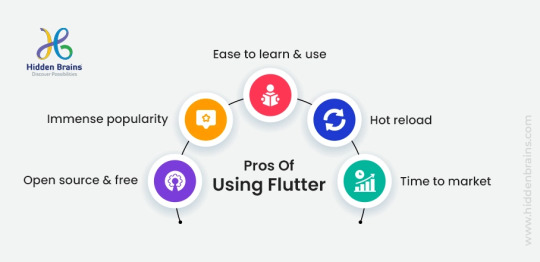
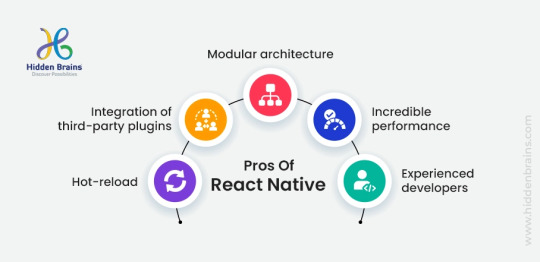
⚖️ Flutter Vs. React Native Vs. Kotlin: Which Framework is Leading the Industry in 2024?
As a startup or entrepreneur diving into app development, choosing the right framework can be a game-changer for your project. With so many powerful technologies available today, Flutter, React Native, and Kotlin are three of the most popular options. But the question remains: which one should you pick for your next app development project? 🤔
Let’s break it down: ✅ Google's Flutter – Built on Dart, Flutter is known for its speed and cross-platform compatibility. If you’re looking for a framework that offers a smooth, native-like experience across both iOS and Android, Flutter is a great choice.
✅ Facebook's React Native – Based on JavaScript, React Native has established itself as a dominant framework for building high-performance, cross-platform apps. Its widespread use and extensive community support make it a solid choice for developers seeking flexibility and speed in their development process.
✅ JetBrains' Kotlin – When it comes to Android app development, Kotlin is the preferred choice for many developers. It offers seamless integration with Android and has excellent support for modern app development. If you're building for Android-specific apps, Kotlin’s got you covered!
But here’s the million-dollar question: will choosing the right app development technology make a difference in your app’s success? Absolutely! 🏆 The scalability, performance, and compatibility of your app depend on the foundation you choose, and these frameworks play a critical role in shaping that.
The rise of mobile apps is undeniable. A 2021 survey predicted 100 billion mobile app downloads for the first time, with projections showing an even higher 150 billion downloads by 2025. With this massive surge in usage, investing in the right technology is more important than ever. 📈
In our latest blog, we dive deep into the pros and cons of each framework to help you decide which one is the best fit for your app development needs in 2024.
🔗 Read the full blog here: https://www.hiddenbrains.com/blog/flutter-vs-react-native-vs-kotlin.html
#flutter#flutterdevelopment#app development#mobile app company#mobile app development#software company#artificial intelligence#software development company
0 notes
Text
The Ultimate Guide to Frontend Development: Crafting Engaging User Experiences

In today’s digital world, where user expectations are higher than ever, frontend development plays a crucial role in shaping the success of a website or web application.
A well-structured, visually appealing, and responsive frontend enhances user engagement and ensures a seamless browsing experience.
Whether you are a business looking for a frontend development company or a developer seeking insights into frontend trends, this guide will walk you through the fundamentals, best practices, and why investing in frontend development services is essential.
What is Frontend Development?
Frontend development refers to the process of designing and implementing the visual and interactive aspects of a website or application. It involves using technologies like:
HTML (HyperText Markup Language): The foundation of web pages, defining their structure.
CSS (Cascading Style Sheets): Enhances the visual appeal with styling, animations, and layout control.
JavaScript: Brings interactivity and dynamic content to life.
Frameworks & Libraries: React, Angular, Vue.js, Bootstrap, and Tailwind CSS streamline development.
A frontend development company specializes in these technologies, ensuring that the user-facing side of a website is not just functional but also visually stunning.
The Importance of Frontend Development in 2024
As digital experiences continue to evolve, businesses need to prioritize frontend development to remain competitive. Here’s why investing in frontend development services is more crucial than ever:
1. User Experience is King
A well-designed frontend improves navigation, readability, and overall user satisfaction. When users find a website intuitive and easy to use, they are more likely to stay longer and convert into customers.
2. Mobile Responsiveness is a Must
With more than 55% of internet traffic coming from mobile devices, a mobile-first approach is essential. Modern frontend frameworks enable developers to create highly responsive designs that adapt to different screen sizes.
3. SEO and Performance Optimization
Google ranks fast, mobile-friendly, and user-friendly websites higher in search results. A strong frontend ensures faster load times, proper HTML structuring, and optimized images—helping businesses improve their SEO rankings.
4. Brand Identity and Trust Building
Your website is often the first impression users have of your brand. A sleek and well-optimized frontend builds trust and reflects professionalism, increasing brand credibility.
Key Frontend Development Trends in 2024
Frontend development is constantly evolving. Here are the top trends shaping the industry:
1. AI-Powered UI and Personalization
Artificial Intelligence (AI) is transforming frontend development by enabling personalized user experiences. Smart UI elements that adapt based on user behavior enhance engagement and retention.
2. Progressive Web Apps (PWAs)
PWAs offer app-like experiences on web browsers, providing faster performance and offline functionality. Businesses investing in PWAs see higher conversion rates and improved user experience.
3. Motion UI for Interactive Websites
Animations and micro-interactions add depth to web experiences. Motion UI techniques help create engaging interfaces that capture user attention.
4. Low-Code and No-Code Development
Platforms that allow businesses to create frontends with minimal coding are on the rise. However, for custom and high-performing solutions, professional frontend development services are still the best choice.
Choosing the Right Frontend Development Company
When selecting a frontend development company, consider these factors:
1. Expertise in Modern Technologies
A reputable company should have experience with the latest frontend frameworks like React, Angular, or Vue.js.
2. Portfolio and Client Reviews
Check their past projects and client testimonials to evaluate their design quality and technical expertise.
3. Performance Optimization Strategies
The right team ensures your website is not just visually appealing but also fast, responsive, and SEO-friendly.
4. Customization and Scalability
Every business has unique needs. A good frontend development company should offer tailored solutions that scale as your business grows.
Conclusion
Frontend development is the backbone of user engagement in the digital space. Businesses that invest in high-quality frontend development services gain a competitive edge by delivering seamless, visually appealing, and high-performing web experiences.
If you’re looking for a trusted frontend development company, choose one that understands modern trends, follows best practices, and prioritizes user experience. Your website is the face of your brand—make sure it stands out!
1 note
·
View note
Text
Fast and Affordable: Building Speedy Websites on a Budget

If you’re reading this, you’re likely planning a new website or looking to enhance an existing one. You’ve probably heard that a one-second delay in page load time can reduce your conversion rates by 7%, according to a 2023 study by Google. Speed is crucial—nobody likes to wait. But here’s the good news: you don’t need a large budget to achieve a fast-loading site.
I’ve been dedicated to web performance for years, earning a certification from Google’s Web.dev program and collaborating with small businesses and startups. Let’s explore why a fast-loading website doesn’t have to be expensive. The secret? A cheap web designer or affordable web design services can deliver impressive results.
Dispelling the Myth: High Cost Doesn’t Equal High Speed
Let’s tackle a common misconception. Many believe that a speedy website requires a hefty budget—premium servers, expensive plugins, or a developer charging $200 an hour. While these can help, they’re not the full picture. A 2024 report from the Web Performance Working Group found that 80% of page load improvements come from basic optimization techniques—like compressing images or streamlining code—not costly overhauls. In other words, you can hire a cheap web designer and still achieve a site that loads in under two seconds.
Consider image optimization. Tools like TinyPNG and Squoosh (both free!) can reduce file sizes by 50-70% without noticeable quality loss. I’ve seen clients reduce load times from 10 seconds to 3 seconds simply by optimizing their JPEGs. No $5,000 server upgrade needed. So why do some overpay? Often, it’s due to a lack of awareness about shortcuts or being sold unnecessary deluxe packages.
The Budget-Friendly Toolkit for Speed
What’s in the toolkit of a savvy cheap web designer? Let’s break it down.
Efficient Code
Bloated code is like a cluttered closet—everything’s harder to find. A 2023 study from Stanford’s Computer Science department showed that minifying CSS and JavaScript—removing unnecessary spaces and comments—can cut load times by up to 20%. Free tools like UglifyJS or CSSNano can do this in minutes. Pair that with a lightweight framework (think WordPress with a minimalist theme), and you’re set. No need for a $10,000 custom build when cheap web design services can optimize existing resources.
Cost-Effective Hosting
You don’t need a dedicated server for speed. Shared hosting plans—like those from SiteGround or Bluehost—start at $5 a month and often include a Content Delivery Network (CDN) like Cloudflare for free. CDNs store copies of your site on servers worldwide, ensuring a fast experience for visitors in Tokyo or Texas. A 2024 analysis from Cloudflare showed that enabling a CDN reduces latency by 30% on average. That’s a significant win for minimal cost.
Effective Caching
Caching is like pre-making your morning coffee—it’s ready when you need it. Plugins like W3 Total Cache (free on WordPress) store static versions of your pages, reducing load times for repeat visitors. A 2024 study in the Journal of Web Engineering found that browser caching alone can boost speed by 25%. Why pay a fortune when a cheap web designer can implement this easily?
Understanding Costs: What Are You Really Paying For?
Let’s discuss the numbers. A custom site from a top-tier agency might set you back $10,000-$20,000, with ongoing maintenance fees. In contrast, cheap web design services might cost $500-$2,000 for a small business site. The pricier option might include extras like animated transitions or a bespoke CMS, but do they enhance speed? Not necessarily. Google’s Lighthouse tool, which measures site performance, focuses on load time, accessibility, and efficiency, not flashy extras. A lean site built by a cheap web designer can outperform a bloated luxury build any day.
The bottom line: speed isn’t just a technical issue—it’s about retaining users. A 2024 Nielsen Norman Group User Study found that 79% of users abandon a site if it takes longer than 4 seconds to load. That’s potential revenue lost, not a shiny design award. Investing in optimization rather than aesthetics often yields quicker returns. Think of it as choosing a reliable car over a gas-guzzling sports car—practicality wins over flashiness.
The Risks: When Affordable Isn’t Enough
Let’s address a common concern. Some worry that cheap web design services might cut corners—ignoring security patches or relying on outdated templates. This is a valid concern. A super-cheap $99 site from an unreliable freelancer might load quickly at first… until it crashes or gets hacked. But here’s the key: skill makes the difference. A reputable cheap web designer—someone with a portfolio and reviews—knows how to balance cost and quality. Look for those who prioritize speed from the start, not as an afterthought.
Another critique? “Cheap” might not scale. If you’re running a large e-commerce site with 10,000 daily visitors, you might need more robust solutions—like a VPS or premium hosting. But for small businesses, bloggers, or startups? Affordable options are sufficient. The trick is understanding your needs, not overspending out of fear.
Choosing the Right Affordable Expert
How do you avoid the unreliable ones? Simple: review their past work. Ask for speed test results—Google’s PageSpeed Insights is a free and reliable tool—from their previous projects. A 2024 U.S. Small Business Administration survey showed 65% of small business owners who chose cheap web design services were satisfied after checking the designer’s background first. Seek designers who mention tools like GTmetrix or discuss optimization in their proposals—they’re not just assembling templates.
Transparency is crucial. I’m not sharing affiliate links—just offering insights based on real-world experience and data. If a designer pushes premium add-ons without a clear explanation, be cautious. Speed doesn’t need a sales pitch; it needs results.
Conclusion: Achieving Speed Without Breaking the Bank
So, what’s the takeaway? Fast-loading websites aren’t a luxury for those with large budgets—they’re a choice. Lean code, smart hosting, and a few free tools can help you achieve speed without breaking the bank. A cheap web designer or cheap web design services can deliver a site that competes with the big players, provided they prioritize performance over aesthetics. The data supports this: optimization trumps overbuilding every time.
Remember: don’t overpay for speed you can achieve affordably. Evaluate your current site (or your envisioned one) using free tools like Lighthouse. If it’s sluggish, hire someone knowledgeable—cheap doesn’t mean low-quality. Your users will appreciate it, your wallet will remain healthy, and you’ll hit that two-second sweet spot. Speed isn’t about money—it’s about expertise. Ready to make it happen?
0 notes